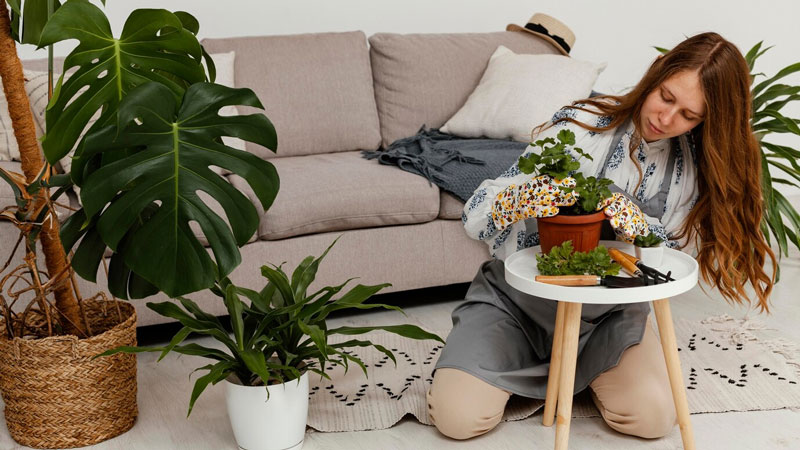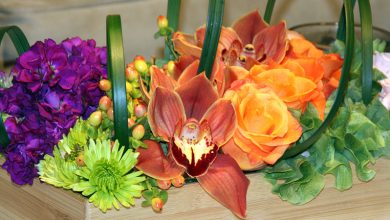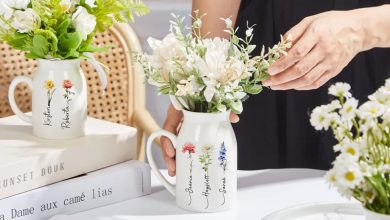My House Plants Keep Dying: Common Causes and Solutions

It can be disheartening when you invest time, effort, and love into your house plants only to see them wither away despite your best intentions. The phrase “my house plants keep dying” echoes a common frustration among plant enthusiasts, reflecting a mix of confusion and disappointment.
Each plant, with its unique requirements and delicate balance of light, water, and nutrients, seems to demand a specific formula for thriving.
Yet, despite the care you provide, the mystery of why these green companions aren’t flourishing can feel like an ongoing puzzle. Understanding why your house plants keep dying involves unraveling the intricate needs of each species, learning how to create an optimal environment, and discovering how to address common pitfalls.
By delving into the reasons behind plant failures and adjusting your approach, you can transform this recurring struggle into a journey of discovery and growth, ultimately fostering a vibrant, thriving indoor garden.
Common Causes of why My House Plants Keep Dying
If you find yourself repeatedly saying, “My house plants keep dying,” it’s essential to investigate the underlying causes to prevent future plant failures. Several common issues may be contributing to your plants’ struggles, each requiring a different approach to remedy. Here are some frequent culprits behind plant demise:
- Improper Watering: One of the most common reasons for house plant death is incorrect watering. Both overwatering and underwatering can stress your plants, leading to root rot or dehydration. It’s crucial to understand each plant’s specific water needs and to ensure the soil drains properly to avoid waterlogged conditions.
- Insufficient Light: Light is vital for photosynthesis, and inadequate light can cause plants to become leggy and weak. If your house plants keep dying, it might be due to a lack of the appropriate light levels. Assess whether your plants are getting enough indirect light or if they need a supplemental grow light.
- Poor Soil Conditions: The quality of the soil plays a significant role in plant health. Using the wrong type of soil or allowing it to become compacted can affect drainage and nutrient availability. Ensure you’re using the right soil mix for each plant and that it’s well-draining.
- Temperature Extremes: House plants are sensitive to temperature fluctuations. Exposure to drafts, heaters, or air conditioners can create an environment that’s too cold or too hot, leading to stress and eventual plant death. Maintaining a stable temperature within the optimal range for your plants is essential.
- Pest Infestations: Pests like aphids, spider mites, and mealybugs can cause significant damage to house plants. If your plants are declining despite your best care efforts, check for signs of pest infestations and treat them promptly with appropriate remedies.
- Nutrient Deficiencies: Plants require a balance of nutrients to grow healthily. A lack of essential nutrients can lead to poor growth and yellowing leaves. Regularly fertilizing your plants with the right type of fertilizer can help address nutrient deficiencies and promote robust growth.
- Inadequate Humidity: Many house plants, especially tropical varieties, thrive in high humidity. Dry indoor air, particularly during winter, can lead to leaf drop and other issues. Increasing humidity through misting, a humidity tray, or a humidifier can help improve plant health.
- Improper Pot Size: Using a pot that is too small can restrict root growth, while a pot that is too large can lead to waterlogged soil. Choose a pot size that suits the plant’s root system and repot as needed to accommodate growth.
- Diseases: Fungal, bacterial, and viral infections can affect house plants and lead to their decline. Identifying and addressing diseases early is crucial to prevent spread and further damage. Ensure good air circulation and avoid overhead watering to reduce disease risks.
- Neglecting Pruning: Regular pruning helps manage plant shape, remove dead or diseased parts, and encourage new growth. Neglecting pruning can lead to overcrowding and poor air circulation, which can contribute to plant decline.
Read More: Fiddle Leaf Fig in Bathroom: What You Need to Know
By addressing these common causes of why your house plants keep dying, you can take steps to correct issues and create a healthier environment for your indoor garden. Understanding and mitigating these factors will help you enjoy vibrant, thriving plants in your home.
The best solutions for My House Plants That Keep Dying
If you find yourself repeatedly facing the frustration of “my house plants keep dying,” it’s time to implement effective solutions to turn things around. Here are some practical steps to address the common issues and rejuvenate your indoor garden:
- Adjust Watering Practices: To resolve issues with overwatering or underwatering, carefully assess the watering needs of each plant. Ensure you’re using pots with good drainage and allow the top inch of soil to dry out before watering again. Use a moisture meter or simply check the soil with your finger to determine when it’s time to water. Consider grouping plants with similar water needs to simplify your care routine.
- Provide Adequate Light: If insufficient light is causing plant distress, relocate your plants to a brighter spot or use supplemental grow lights. Research the light requirements of each plant to ensure they receive the appropriate amount of indirect or filtered light. For low-light areas, choose plants that are better suited to low-light conditions.
- Improve Soil Quality: Ensure you’re using the correct soil mix for each type of plant. For better drainage, consider adding perlite or sand to the soil. If your plants are root-bound, repot them into a larger container with fresh soil to encourage healthy root growth and improve overall plant health.
- Maintain Stable Temperatures: Protect your plants from temperature extremes by avoiding placement near drafts, heaters, or air conditioners. Keep indoor temperatures within the ideal range for each plant species and use a room thermometer to monitor conditions. Consistency is key to preventing temperature-related stress.
- Address Pest Problems: Regularly inspect your plants for signs of pests such as aphids, spider mites, or mealybugs. Treat infestations promptly with insecticidal soap, neem oil, or other suitable pest control methods. Keeping your plants clean and maintaining good air circulation can also help prevent pest issues.
- Nourish with Proper Fertilization: Feed your plants with the right type of fertilizer based on their nutritional needs. Use a balanced, water-soluble fertilizer during the growing season and follow the recommended application rates. Avoid over-fertilizing, which can lead to nutrient imbalances and damage.
- Increase Humidity: To combat low humidity, particularly in winter, use a humidifier, place a humidity tray near your plants, or mist them regularly. Grouping plants together can also help create a microenvironment with higher humidity levels. Choose plants that are well-suited to the humidity levels in your home.
- Choose the Right Pot Size: Select a pot size that accommodates your plant’s root system without being too large or too small. Repot your plants as needed to provide ample space for growth and to refresh the soil. Ensure pots have adequate drainage holes to prevent waterlogging.
- Prevent and Manage Diseases: To minimize the risk of plant diseases, ensure good air circulation around your plants and avoid overhead watering. Remove and dispose of any diseased plant parts promptly. Use appropriate fungicides or bactericides if needed and maintain clean gardening tools to prevent the spread of diseases.
- Implement Regular Pruning: Regularly prune your plants to remove dead, diseased, or overcrowded growth. Pruning helps improve air circulation and encourages new, healthy growth. Trim back leggy stems and shape your plants to promote a balanced and attractive appearance.

By implementing these solutions, you can address the underlying issues causing your house plants to struggle and transform the recurring problem of “my house plants keep dying” into a thriving, vibrant indoor garden. With attentive care and appropriate adjustments, you’ll be well on your way to enjoying healthy, flourishing plants in your home.
Read More: Best Easy-to-Care-for Plants That Are Safe for Cats
How can I stop my houseplants dying?
Stopping your houseplants from dying involves a combination of understanding their needs and adjusting your care practices accordingly. Here’s a comprehensive guide to help you keep your houseplants healthy and thriving:
1. Understand Plant Requirements
- Research: Identify the specific needs of each plant species you have, including light, water, soil, and temperature requirements.
- Group Plants: Group plants with similar needs together to simplify care and ensure they receive the appropriate conditions.
2. Optimize Lighting
- Assess Light Levels: Ensure your plants receive the correct amount of light—bright, indirect light for most houseplants, or low light for shade-tolerant species.
- Use Grow Lights: For areas with insufficient natural light, consider using grow lights to supplement and provide the necessary illumination.
- Rotate Plants: Periodically rotate plants to ensure even light exposure and prevent one side from becoming leggy or weak.
3. Water Properly
- Check Soil Moisture: Use a moisture meter or check the top inch of soil to determine when to water. Avoid watering on a fixed schedule; water based on the plant’s actual needs.
- Avoid Overwatering: Ensure pots have drainage holes and use well-draining soil to prevent water from accumulating at the bottom.
- Adjust for Seasons: Reduce watering frequency in the winter when plant growth slows down.
4. Maintain Soil Health
- Choose the Right Soil: Use soil that suits each plant’s needs, such as a well-draining mix for most houseplants or specialized mixes for succulents and orchids.
- Repot Regularly: Repot plants every 1-2 years or when they become root-bound to provide fresh soil and more space for growth.
5. Manage Temperature and Humidity
- Avoid Temperature Extremes: Keep plants away from drafts, heaters, or air conditioners. Maintain a stable indoor temperature that suits your plants.
- Increase Humidity: Use a humidifier, place a humidity tray, or mist plants regularly to raise humidity, especially for tropical plants. Grouping plants can also help create a more humid microenvironment.
6. Fertilize Appropriately
- Feed Regularly: Use a balanced, water-soluble fertilizer during the growing season (spring and summer) according to the plant’s needs.
- Avoid Over-Fertilizing: Follow the recommended dosage to prevent nutrient imbalances and potential damage.
Read More: Aloe Vera Plant in Office: Benefits and Care Tips
7. Monitor for Pests and Diseases
- Inspect Regularly: Check plants frequently for signs of pests such as aphids, spider mites, or mealybugs. Treat infestations promptly with insecticidal soap or neem oil.
- Prevent Diseases: Ensure good air circulation around plants and avoid overhead watering to reduce the risk of fungal and bacterial diseases. Remove and discard any infected plant parts.
8. Prune and Maintain Plants
- Prune Dead Growth: Regularly remove dead or damaged leaves and stems to encourage healthy growth and improve air circulation.
- Train Plants: Use stakes, trellises, or other supports as needed to help climbing or sprawling plants grow more effectively.
9. Choose the Right Pot
- Select Proper Pot Size: Choose a pot that accommodates the plant’s root system without being too large or too small. Ensure it has drainage holes to prevent waterlogging.
- Repot as Needed: Repot plants when they outgrow their current pots to provide more room for root expansion.
10. Educate Yourself
- Stay Informed: Continuously learn about plant care through books, online resources, or local gardening groups to stay updated on best practices and troubleshooting tips.
Read More: Brazilian Jasmine Plant Care Indoor: Essential Tips
By following these steps and tailoring your care to meet the specific needs of your houseplants, you can significantly reduce the likelihood of plant deaths and enjoy a thriving indoor garden. With attention and diligence, you’ll create a healthier environment for your plants and foster their growth and vitality.
Conclusion
the recurring issue of “my house plants keep dying” can be a perplexing and disheartening challenge, but it also serves as an opportunity for growth and learning. Understanding the underlying causes behind plant decline—whether it’s due to improper watering, insufficient light, or other environmental factors—allows you to make informed adjustments and cultivate a thriving indoor garden.
By embracing solutions such as optimizing watering practices, providing adequate light, improving soil conditions, and addressing pest issues, you can transform your plant care routine into a harmonious balance of nurturing and precision. Each step taken towards resolving these common problems not only enhances the health of your plants but also deepens your connection to the art of indoor gardening.
Through patience and attention to detail, you can overcome the frustration of plant failure and enjoy the vibrant beauty and tranquility that a flourishing indoor garden brings to your home. The journey from struggling plants to a thriving indoor oasis is a testament to your dedication and care, turning the challenge of “my house plants keep dying” into a rewarding and enriching experience.




